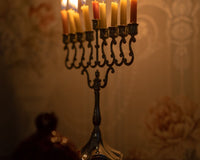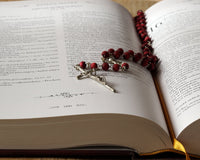Because of the Covid-19 pandemic, many faithful Catholics around the world are attending mass from home. One of the important aspects of that is burning incense. Learn how incense burners are used during prayer and other moments so you can do so in the comfort of your own home.
The Latin word incendere is where we derive the word incense from, and it literally translates into the phrase “to burn.”
Using incense and other aromatics is a practice that is widespread throughout the world in many religions and has myriad symbolic meanings. Most often it symbolizes purification, and the physical manifestation of the prayers of the faithful rising to heaven. Psalm 141:2 reads “Let my prayer be set forth before thee as incense; and the lifting up of my hands as the evening sacrifice.” Additionally, it makes an appearance in the book of Revelation symbolizing the prayers of the saints in heaven which rise toward the altar of God Himself.
There are various methods of burning incense in the home, and you can choose the one that you feel is right for you.
Consider using a hand censer that is easily held (rather than the swinging censer most often used by the clergy). When using a hand censer, hold it in your right hand, using the censer to make the sign of the cross over whatever you are censing. Then switch the censer to the left hand, make the sign of the cross, and then bow. If you are censing others, make the sign of the cross with the censer and then bow to those people (without signing yourself). It is up to you whether you cense at the beginning or the completion of morning or evening prayers. Many deacons or parish priests are happy to instruct parishioners on the proper use of a hand censer, the charcoal for burning incense, and the incense itself.
Many people use cone or stick incense in their home prayer and lectio divinia, but another popular way to cense is to use resin incense. When using resin incense, you place a piece of charcoal into the burner and light it-- be careful-- it will sometimes spark. Then place a small pinch or two of incense on top, being careful not to smother the charcoal. Remember that your incense burner will be smoldering hot and that you should never leave charcoal unattended.
Some choose to have a Cross and Gospel in their icon corner, using this as the place that their censing both begins and ends. This gives you the option to cense the icons in the corner, or the entire room (or any other rooms you wish as well).
While some families choose to cense during their prayers, others do so less often, on occasions such as the beginning of lenten periods, on Saturday evenings, on the eves of feasts, and other occasions that are important to them.
Note that the ashes from the incense on the burnt charcoal shouldn’t just be tossed in the trash, but instead buried in the ground, laid along the foundation of the building, or put in any other place where no one will step on them.
Learn more about using incense in your home here.






